Jammu and the KASHMIR truth: What I learnt travelling the UT on a cycle
Jammu and Kashmir stands as a unique and complex Union Territory in India, characterized by its distinct regions—Jammu and Kashmir—each with vastly different cultures, demographics, terrains, traditions, and ways of life. This division under a single administration reflects a broader conflict that has strained India’s relationships with both Pakistan and China. The region’s intricate and often turbulent history is mirrored in its present, where the lack of widespread tourism in Kashmir, aside from a few pilgrimage sites, has led much of the public’s understanding to be shaped by media and news outlets, which often have their own biases and agendas.
The true nature of Jammu and Kashmir remains elusive, even to those who attempt to understand it. The region exemplifies the broader political complexities of India, with varying perspectives from the military, civilians, businesspeople, police, government employees, and local residents all contributing to a fragmented view of reality. This diversity of opinion and experience makes it exceedingly difficult to form a cohesive understanding of the situation. Corruption and administrative challenges are prevalent, exacerbated by the region’s immense diversity, which complicates the implementation of uniform policies. Additionally, unemployment in Jammu and Kashmir is notably high compared to other parts of India.
The heavy militarization of the region raises questions about its necessity, particularly when compared to the comparatively less fortified areas of the Indian border with China (Read this article). Despite its breathtaking natural beauty, often described as divine, the lack of awareness and attention has prevented the state from being adequately cared for.
As I conclude my journey through Kashmir, I am left with as many questions as answers. My observations, while striving for objectivity, are inevitably colored by my experiences and perspective. I urge readers to approach this account with a critical eye and a degree of skepticism. If you find any inaccuracies or areas for improvement, I welcome your feedback to help refine and enhance the understanding of this enigmatic region.

Militancy in Kashmir
Militancy in Kashmir is a deeply rooted issue that has persisted since the 1990s, largely stemming from the central government’s increasing control over a state that was once governed by a secular party. This conflict is the result of a complex web of factors, including Pakistan’s strategic interest in the region, religious tensions, and allegations of human rights violations. These elements coalesced into a powerful demand for a separate state, sparking protests that raged violently until 2019.
During my time in Kashmir, I spoke with individuals from various backgrounds and occupations, each offering starkly different perspectives on the situation, making it challenging to capture the full scope of the issue. While the intensity of the separatist movement has diminished, it has not been completely eradicated. The Indian government, through its military presence, has now asserted full control over the region, transforming it into a Union Territory with centralized power.
Although the immediate unrest appears to have subsided, there are those who believe that this conflict is far from over, suggesting that the underlying tensions may resurface in the future. The situation in Kashmir remains precarious, with an uncertain path ahead.
History
Kashmir’s history is a tapestry woven with the legacies of various rulers, with Hindu dynasties initially holding sway over the region. However, the 1300s marked a significant turning point with the rise of the Mughal Empire, leading to the gradual Islamization of what was once a predominantly Hindu region. The last prominent ruler, Maharaja Gulab Singh of the Dogra dynasty, acquired the princely state of Jammu and Kashmir and governed it under British suzerainty until India’s independence in 1947.
Upon partition, a portion of the princely state was seized by Pakistan, now known as ‘Azad Kashmir,’ with Muzaffarabad as its capital, while the larger part remained with India. The final ruler of Jammu and Kashmir, Maharaja Hari Singh, initially sought to maintain Kashmir’s independence but was compelled to accede to India in the face of an invasion by Afghan tribal forces, supported by Pakistan, shortly after India’s independence. This decision led to the eventual abolition of the monarchy in 1952 by the Indian government.
In the aftermath of accession, Article 370 was introduced, granting Jammu and Kashmir significant autonomy, including its own constitution, flag, and administrative independence. This special status prevented non-residents from purchasing land in the state. However, the abrogation of Article 370 in 2019 sparked widespread protests and reignited demands for the restoration of a secular state.
Up until 2018, militancy in the region was at its peak, but the Indian government has since asserted control, integrating Kashmir more fully into the Indian Union. The situation today reflects a narrative of increasing centralization, where Jammu and Kashmir, once a princely state with considerable autonomy, has been brought under tighter control by the Indian government.
This complex history raises profound questions: Was the Indian government justified in gradually stripping away Kashmir’s autonomy, especially when the state initially joined India under specific conditions? Conversely, as part of the Indian Union, does the government not bear the responsibility of managing the region in what it perceives to be the best interest of the nation? Both perspectives are valid, and neither offers a conclusive answer, leaving the debate open to interpretation and further inquiry.
The aim of the militants
Kashmir has witnessed the rise and fall of several militant leaders, such as Burhan Wani and Zakir Musa. Following their deaths in 2016 and 2019, respectively, there has been a significant decline in militancy. Over the years, various militant leaders and groups have emerged and faded, all driven by the common goal of an independent Kashmir. While their objectives might differ slightly—some advocating for an entirely independent Kashmir, others favoring a union with Pakistan—the underlying aim has remained consistent: to break free from Indian governance.
Both factions, those seeking independence and those desiring alignment with Pakistan, have often collaborated toward this cause. Religion has played a unifying role in their efforts, and the deaths of some family members have further fueled civilian unrest and protests. Critics argue that militants have manipulated locals into believing that an independent Kashmir is the best path forward. However, a growing majority now recognizes the negative influence of Pakistan and prefers to remain part of India, seeing it as a way to improve their quality of life.
The current situation
In recent years, with the increased access to the internet, locals in Kashmir have become more informed and have begun to realize the self-destructive nature of their resistance against the Indian government. They have recognized that the continuous protests and unrest have hindered their development across various sectors. At the height of militancy in 2018, it was common for almost every family to have had at least one member involved in protests at some point. Even children, who once avoided school, would often skip classes to join the demonstrations. During these protests, parents frequently encouraged their children to participate, and they often joined in themselves. When militants died, people would travel long distances, sometimes up to 150 kilometers, to attend their funerals. At one point, societal pressure made participation in protests almost mandatory, with those who refrained being looked down upon.
In response to this widespread unrest, the military established separate burial sites for those killed in militancy-related violence, and the Kashmir police detained minors in juvenile facilities in Jammu, while adults were sent to Tihar Jail. The Public Safety Act (PSA), enacted during this period, continues to be enforced, allowing authorities to detain individuals without the right to question their detention. This act also permits the incarceration of minors under 18 in juvenile facilities.
However, after the COVID-19 pandemic, many people in Kashmir have come to realize the detrimental impact the unrest has had on education, job opportunities, and tourism. They have also begun to understand that continuing the protests could lead to future generations being stigmatized as terrorists, making it difficult for them to leave Kashmir. The availability of the internet has enabled people to fact-check information and align themselves with the Indian government by adhering to current laws and norms.
A significant portion of the population has surrendered, earning the status of “ex-militants,” which grants them a certificate providing certain benefits, including a category advantage. These individuals, known as Over Ground Workers (OGWs), now assist the military and government sectors. However, this status comes at a cost, as their entire family is denied passports, preventing them from visiting Mecca, their holy site. To ensure safety during significant Indian government events, such as Independence Day, these individuals often voluntarily submit to detention.
While the majority of the population now supports remaining part of India, there remains a sizable minority that still harbors aspirations for an independent Kashmir. Approximately 60-65% of the population favors staying with India, but around 25-30% still desire independence, and a small group, about 5-10%, seeks alignment with Pakistan. In 2014, as much as 90% of the population favored independence.
This shift in attitude doesn’t imply complete peace with the Indian government. Educated individuals continue to advocate for their rights, including the restoration of Article 370 and reservations in competitive exams like NEET, though their protests are now more peaceful.
Despite the reduction in militancy, a small number of militants still operate, often finding refuge in civilian homes, whether welcomed or not. Although there has been significant progress in reducing militancy, Kashmiris are still frequently perceived as terrorists outside their state, leading to incidents of discrimination, such as students being evicted from their accommodations upon returning from vacations. As a result, many Kashmiris choose to remain within the safety of their homes.
In southern parts of Kashmir, such as Pulwama, Shopian, and Anantnag, a curfew is enforced after 8 PM, making these areas heavily secured. Nevertheless, locals claim that they now live in a much safer environment than before, with the fear of the army that once plagued their minds largely dissipated. Some even report that government employees, who previously shirked their duties, have begun to work under the current administration.
Kashmiri pandits
Hinduism was the dominant religion in the Kashmir region long before the advent of Islam. Post-independence, Kashmir had a diverse demographic composition, including Muslims, Pandits, and Sikhs. However, in 1990, the eruption of protests led to a significant exodus of Kashmiri Pandits from the region. Today, many of these Pandits have resettled in Jammu, where the government provided refugee camps. Over time, they have established themselves, climbing the socioeconomic ladder, and earning a reputation as hardworking individuals, often holding positions in government sectors and other prominent fields.
While the exodus is often attributed to the unrest and perceived animosity from the Muslim community towards the Pandits, conversations with locals suggest a different narrative. Some locals believe that the exodus was orchestrated more by the Indian government than by the Muslim population. They argue that the fear of militants is often cited as the cause of the Pandits’ flight, but they believe the government had ulterior motives—namely, to ensure that the valley was predominantly Muslim, allowing for greater control over the region. Some locals also noted that the areas where Pandits lived were among the most literate and developed, leaving a lasting legacy behind. However, these claims lack concrete evidence, making it difficult to determine the true cause of the exodus.
Many older locals express deep nostalgia for the days when they lived alongside Pandits, recalling fond memories of their childhood friendships and expressing a desire to see them return.
Contrary to the widespread belief that Hindu temples in the region were vandalized, during my journey through the Lolab Valley in Chandigam, I observed temples that, while weathered by time, still stood intact. According to the locals, some Pandits still visit these temples annually to perform Puja, staying with their Muslim neighbors, with whom they once lived in harmony.
A question frequently posed by locals was why the Sikhs, who also resided in Kashmir, remained while the Pandits left. Some speculate that the Sikhs, who had a history of resilience, refused to leave, even at the cost of their lives, whereas the Pandits did not possess the same resolve. However, these are just individual perspectives, and the full story remains obscured by conflicting accounts. The true reasons behind the exodus of the Kashmiri Pandits remain a mystery, with each side offering its own interpretation and blaming the other.
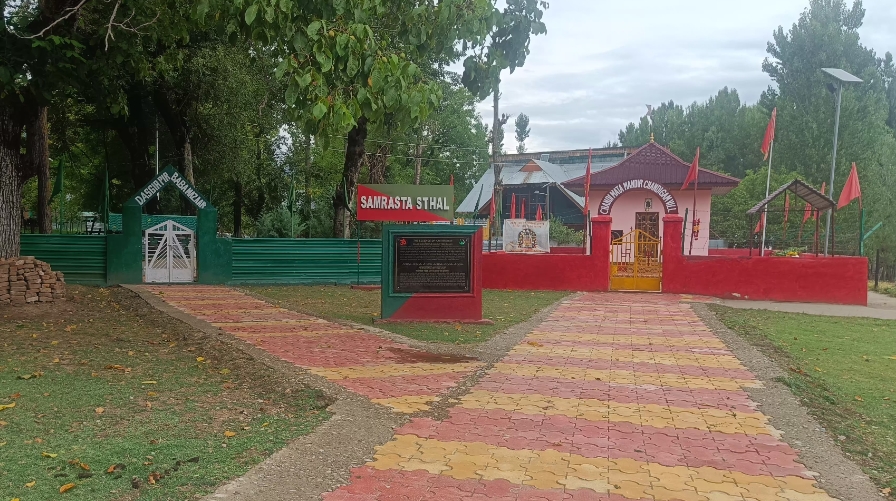
Conspiracies
The exodus of Kashmiri Pandits from Kashmir in the 1990s has sparked numerous conspiracies and questions among locals, many of which lack solid evidence but offer perspectives that some find plausible. One of the most puzzling questions is why the Kashmiri Pandits fled while the Sikhs, who also faced significant challenges, chose to stay.
Some locals, particularly those critical of the government, have spoken about the Ikwans, former militants who were armed and empowered by the Indian Army to serve as local enforcers. Unfortunately, many claim that the Ikwans abused their power, engaging in heinous acts such as rape and other crimes. This alleged misuse of power has fueled resentment among the local population.
The Public Safety Act (PSA) has also been a source of controversy. There are claims that it has been misused, with individuals being imprisoned for up to six years for participating in a single protest. The strict enforcement of the PSA, including property seizures and violent crackdowns, has created deep-seated anger and fear among the people. The act has effectively silenced dissent, with those who speak out on social media being labeled as anti-national. This has led many to question why they should live in fear in their own homeland.
The Pulwama attack in February 2019, which killed 40 CRPF personnel, is another event that has raised significant concerns. Satya Pal Malik, the governor of Jammu and Kashmir at the time, claimed he had warned the central government of the impending threat, but his warnings were allegedly ignored. Although the Lashkar-e-Taiba was found responsible for the attack, the incident led to widespread discrimination against Kashmiris across India, with students being expelled from colleges and hostels.
The Kunan-Poshpora mass rape in February 1991 is another dark chapter in Kashmir’s history. Allegedly perpetrated by Indian military personnel, the case has been denied by the military and has never been properly investigated, leaving the victims without justice. This has led to lingering questions about the brutality of the military towards civilians in Kashmir and why the case remains unresolved.
Locals have also raised concerns about the infiltration of Pakistani militants into Kashmir. Given that Kashmir is one of the most heavily militarized regions in the world, they question how militants could enter India in such large numbers. Some believe that corruption within the Indian military may have facilitated this, possibly as a way to justify the continued heavy military presence in the valley. However, a senior military officer suggested that the vast and difficult terrain along the 3,200-kilometer India-Pakistan border makes it challenging to secure completely, allowing some militants to cross undetected. Nonetheless, this explanation does not fully address why such a large military force is concentrated in the valley rather than being deployed more effectively along the border.
Further questions arise regarding the radicalization of well-educated individuals like Burhan Wani, Zakir Musa, and PhD scholar Manan Wani, who joined militant groups despite their backgrounds. This raises concerns about the deeper societal and psychological factors driving educated youth towards militancy. I recommend reading this article for more insight: [What Makes Kashmiri Youth Join Militancy?]
Additionally, some locals have questioned recent changes in the school syllabus, which allegedly remove references to freedom fighters, and the declining apple prices, as Himachal Pradesh’s apples have increasingly overtaken Kashmir’s in the market. While these issues may seem disconnected, they contribute to a broader sense of unease and suspicion among the population.
In the end, while many of these concerns lack definitive evidence, they reflect the deep mistrust and unresolved tensions that continue to shape life in Kashmir. These questions, though speculative, highlight the need for transparency and a deeper understanding of the complex dynamics at play in the region.
Media influence
To truly grasp the influence of media on people’s psychology, one must visit Kashmir. Social media has instilled a deep sense of fear among both locals and outsiders. Throughout my journey in Kashmir, I encountered very few tourists, and even the highways leading to popular destinations were eerily empty. The only non-locals I saw were pilgrims traveling under heavy security. The pervasive fear is palpable, with many people I met advising me not to stay in Kashmir for too long.
The media’s impact on the local population is particularly troubling. I often glimpsed at what people were viewing on their phones, and much of it consisted of content painting the outside world as hostile and dangerous. Many locals expressed fear about leaving Kashmir, convinced that they would be labeled as terrorists and attacked elsewhere in India. Some admitted that they had only visited Jammu once in their lives, and even then, they were gripped by anxiety.
In reality, both sides seem to be living in fear that is largely unfounded, a truth far removed from the distorted narratives being fed to them through social media. While it’s difficult to ascertain the extent of the government’s role in perpetuating this situation, it’s easy to see how one might conclude that there is a deliberate effort to keep both tourists away and locals confined. After spending a few weeks interacting with Kashmiris, one can’t help but sense that a political agenda may be at play, manipulating perceptions to maintain control over the region.
Military allocation
As previously mentioned, Kashmir is the most heavily militarized region in the world, consuming a significant portion of India’s GDP. During my travels, I observed soldiers stationed every 100 meters along the highways, equipped with heavily armed machinery. The overwhelming military presence gives the impression that the region is in the midst of a major conflict or war. However, during my 20-day stay in Kashmir, I never witnessed an incident that seemed to justify such intense security measures.
The Armed Forces Special Powers Act (AFSPA), which grants the military the authority to detain individuals without trial, was implemented in 1990 in response to attacks on Kashmiri Pandits, and it remains in effect today. This unchecked power has instilled fear among the local population. I heard stories of people being humiliated and beaten by soldiers on mere suspicion of harboring militants. The fact that no warrant is required to file an FIR and that people’s property and passports can be confiscated without concrete evidence has only deepened the locals’ fear and resentment toward the military. The people of Kashmir find themselves caught between the military and the militants, both of whom pose significant threats to their safety. In some remote areas, families are still forced to host militants under the threat of violence, only to be later prosecuted by the authorities and have their properties seized. This leaves the locals in a precarious position, caught in a power struggle between two opposing forces.
Given the relative calm in the region over the past five years, one must question why the AFSPA is still in effect. During my trip to Pahalgam, where the Amarnath Yatra begins, I spoke with a soldier and asked why security was so tight on the roads. I wondered if it was solely for the Yatra or if this level of deployment was standard. The soldier informed me that this level of deployment was maintained year-round. When I asked him when he last witnessed a militant protest, he admitted that militancy had nearly ended and that the current level of deployment seemed unnecessary. He even joked that the soldiers were simply enjoying the TA/DA allowances provided to them.
Incidents like these made it clear to me that the situation in Kashmir is being exploited for political purposes rather than out of genuine necessity. While critical government jobs remain unfilled for decades due to budget constraints, vast amounts of money are being spent on maintaining a military presence that no longer seems to serve a clear purpose. This misallocation of resources raises serious questions about the priorities and intentions behind the continued militarization of the region.
Culture
Jammu and Kashmir represent some of the most diverse cultures brought together in a single union territory or state in the entire country. The food, clothing, traditions, heritage, demography, religion, and overall way of life differ vastly between the two regions, with little common ground. Yet, they are bound by a shared history, particularly during the reign of King Gulab Singh from the Dogra dynasty in the British era, who ruled over both regions. During his time, Srinagar served as the summer capital and Jammu as the winter capital, a practice that continued until recently.
In Jammu, the Shaktite culture of Hinduism prevails, with a strong emphasis on the worship of deities like devis and devatas. In contrast, Kashmir is predominantly Muslim, often referred to as “Pir War,” meaning the land of spiritual beings. Islamic preachers from Baghdad and Persia introduced Islam to Kashmir in the 13th century, leading to the decline of Shaivism in the 15th century. While Kashmiri culture remains deeply rooted and vibrant, the Dogra culture in Jammu is slowly fading. Unlike in Kashmir, where the Kashmiri language is still widely spoken, the Dogri language in Jammu, which bears similarities to Punjabi, is increasingly being lost among the younger generation.
The cultural differences between Kashmiri Muslims and their counterparts in Pakistan are also significant, particularly in areas like weddings, food, and clothing. Just as Ladakhi Muslims differ from Kashmiri Muslims, there are notable distinctions between Kashmiri and Pakistani Muslims as well. Kashmiris take immense pride in their unique cultural practices, such as the traditional “pheran,” a long robe worn to combat the cold, the afternoon butter tea served in a traditional samovar, and the elaborate “wazwan” meal, especially served at weddings. These cultural elements are unique to Kashmir and cannot be found elsewhere. To cope with the harsh cold, people in the valleys also smoke the traditional “jajeer” hookah, further emphasizing their rich and distinctive cultural identity.
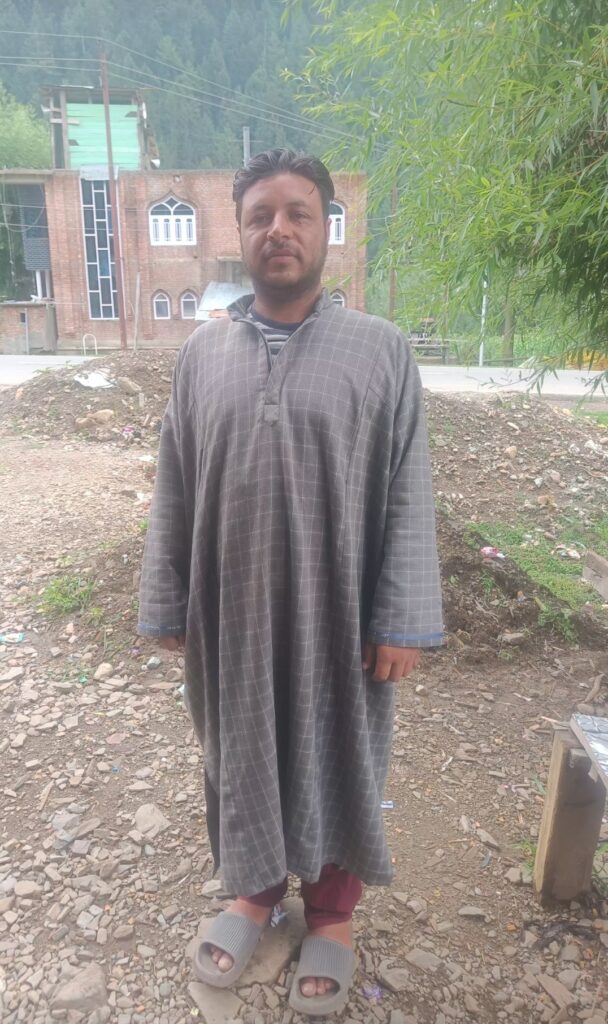
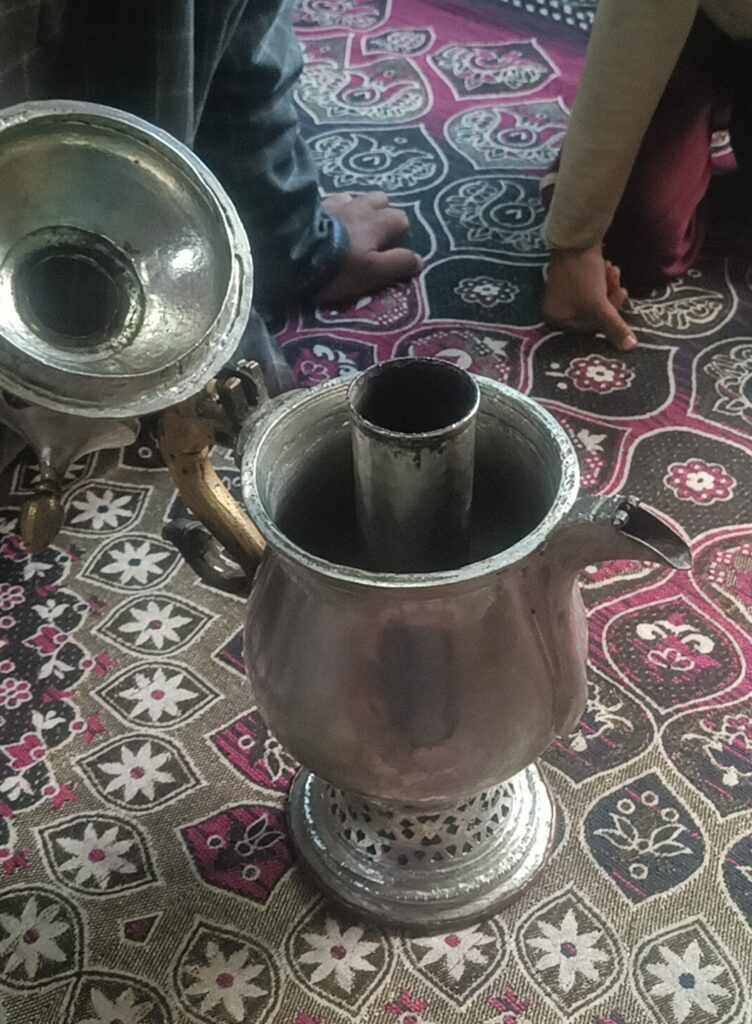
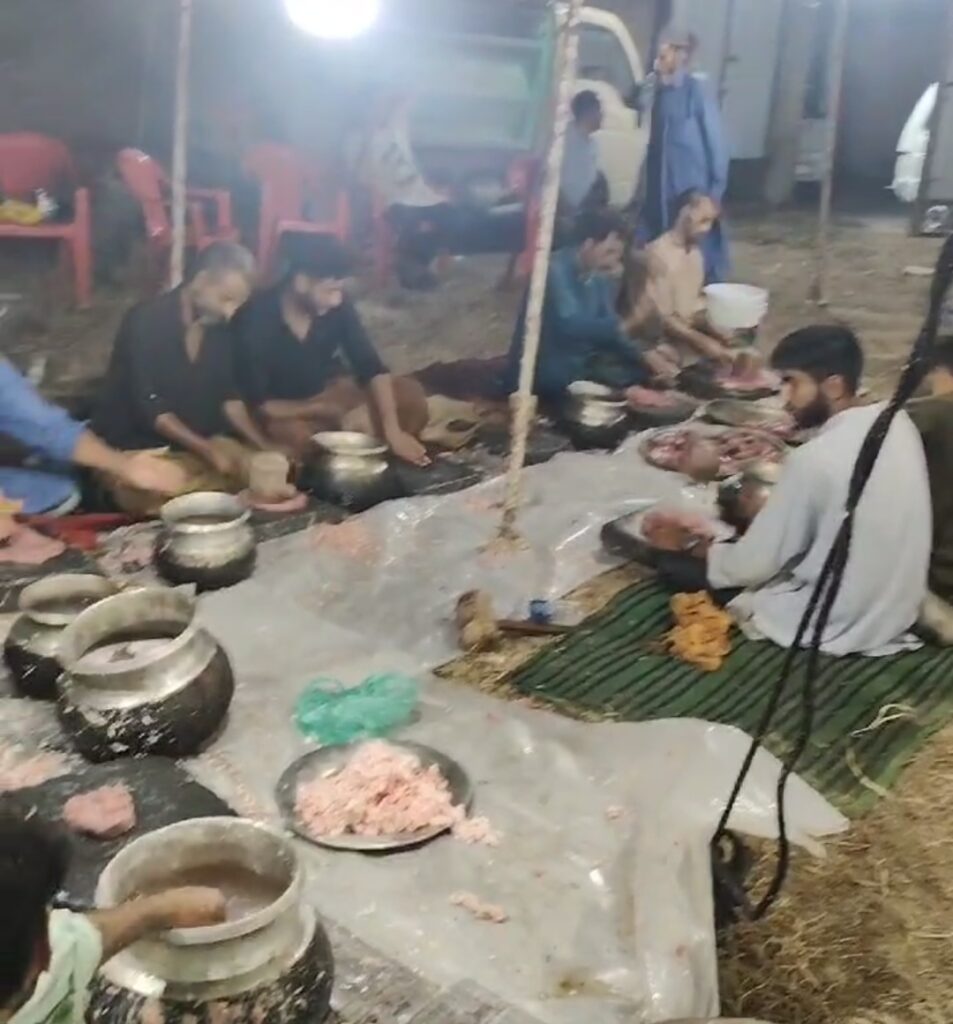
There is a profound sense of brotherhood among Kashmiri locals that I have rarely observed elsewhere in the country. When Kashmiris encounter each other, whether in their hometown or any part of the state, they interact as if they are lifelong friends. I frequently noticed cab drivers handing over their phones to passengers to answer calls or strangers at picnics coming together to cook food, bonding as if they were family members.
A significant aspect of Kashmiri culture, rooted in their religion, is the absence of discrimination based on one’s profession. While certain trades like barbering or shepherding might be passed down through generations, everyone is treated equally, with no one looked down upon for their work. At weddings, for instance, four random guests share the traditional “wazwan” meal from a single large plate, regardless of their social status. The richest and the poorest dine together, symbolizing their unity and equality.
Furthermore, about 90% of Kashmiri families live in joint family setups, although the trend toward nuclear families is slowly emerging, leading to a land crisis due to the large family sizes. It’s not uncommon for parents to have four to six children, which fosters strong bonds and deep care among family members. Sisters, cousins, and extended relatives frequently check in on one another, ensuring everyone is well. Their strong disapproval of alcohol, influenced by their religious beliefs, often leads to public disdain for drunken behavior. A person found intoxicated on the streets might be ignored or even reprimanded, which discourages public drinking. However, smoking is quite prevalent among the elderly in Kashmir, who often replace drinking with cigarette smoking.
While traveling in Kashmir, one might notice that people often appear wealthier than they seem, largely due to their cultural practices. Kashmiris tend to uplift the less fortunate, driven by a strong sense of community, and they take pride in owning large homes and hosting grand weddings. It is a cultural norm to save money for a spacious house and a lavish marriage celebration.
Another distinctive feature of Kashmiri life is the way they navigate the roads, with driving often being an assertive affair, and minor accidents taken lightly as they are commonplace. Additionally, cricket holds a special place in Kashmiri hearts, with almost every child both watching and playing the game. Many young Kashmiris especially admire Pakistani bowlers, reflecting the unique blend of cultural influences in the region.
The treatment
If you ask a military man about the safety of traveling in Kashmir, you’ll likely hear about the dangers of militancy and the potential for mistreatment. This was the fear I carried with me into Kashmir, but it quickly faded after I interacted with a few local Kashmiris. They turned out to be some of the kindest people I’ve encountered, and this warmth was consistent throughout my journey.
It’s important to understand that many of the young soldiers stationed in Kashmir, often just 18 years old, are indoctrinated to see everyone as a potential terrorist. This mindset is the result of their training and the extremist views they are sometimes exposed to, which contrasts sharply with the reality of life in Kashmir.
Kashmiris can generally be divided into two groups: those who are not involved in the tourism industry and those who are. Unfortunately, the locals working in tourism can be quite unreliable, often driven by a desire to take advantage of visitors. This aligns with what I heard in Ladakh, where people spoke about the ruthless behavior of some Kashmiris, such as hiking up the prices of essentials like tomatoes exported to Ladakh. Greed has led some to exploit others, and you can see evidence of this by reading reviews of places like Gulmarg or Sonmarg, where tourists complain about being overcharged for horse rides, essentials, and hotel services. However, if you look past the few unscrupulous individuals in the tourism sector, you’ll find that the majority of Kashmiris are incredibly warm and genuine.
Kashmiris are renowned for their hospitality, and my journey helped me understand why. The concept of “Mehman Nawazi” (hospitality) is deeply ingrained in their culture. For them, guests are truly considered gods, and they go out of their way to make visitors feel welcome. During my 20-day stay in Kashmir, I spent half of it in the homes of locals who invited me in after just a brief conversation. They cooked special vegetarian meals for me, even when it meant extra work for them. Contrary to my initial assumptions, I found that the most religious Kashmiris were the most welcoming and friendly. If someone is deeply religious and truly follows Islam in Kashmir, they are likely to help you, even at their own expense.
Small shopkeepers in Kashmir are honest, often selling products at MRP and sometimes even waiving the cost if they realize you’re an outsider. If you mention you’re looking for a place to stay, it’s not uncommon for someone to kindly offer, “Rukho yahin” (stay here). This hospitality, many say, stems from their religious beliefs. It’s common for Kashmiris to personally escort you to the door, whether it’s to the washroom or when bidding you farewell from their home. The level of hospitality in Kashmir is unmatched and unlike anything you’ll experience in the rest of the country.
Kashmiris appreciate compliments, but if you gently criticize them, they typically respond with quiet grace rather than hostility. On the other hand, people in Jammu tend to be more reserved and focused on their own business. Even those in Jammu agree that Kashmiris are exceptionally hospitable, though many have mixed feelings about Kashmir for various reasons.
Depression from suppression
Despite the well-known hospitality of Kashmiris and the lack of overt discrimination among them, a distinct hierarchy exists between those in power and the common people. This dynamic is particularly evident in the way those in positions of authority assert their dominance over others. Unlike in Ladakh, where I observed that even business owners treated their employees with kindness, Kashmir presents a different picture. The region has minimal private sector opportunities, and the economy is heavily reliant on government jobs. However, unemployment remains a significant issue.
Those who work in government positions often wield their power with an air of superiority, exerting control over ordinary citizens. This sense of dominance is pervasive across various relationships, whether it’s a police officer over a civilian, a shop owner over an employee, or any other superior-inferior dynamic. The higher officials often speak in an authoritative, suppressive tone, creating an environment of fear and depression. People in Kashmir have grown accustomed to fearing figures of authority, such as police officers, electricity board members, and other government officials, who frequently display their power and engage in corruption.
During my travels in Ladakh, I spoke with a doctor from Kashmir who worked at a Primary Health Centre. He mentioned that Kashmiris are some of the most depressed people he has encountered, and my experiences in Kashmir helped me understand why. The question of why Kashmiris, once they attain positions of power, often do not treat their fellow Kashmiris well is a complex one. One explanation that stuck with me came from a local who said, “Give a man power, and his true identity gets unveiled.” He suggested that even those who have been oppressed might become oppressors once they gain power, simply because they are replicating the behavior they have observed since childhood.
Beyond this superiority-inferiority relationship, the Public Safety Act (PSA) and the Armed Forces Special Powers Act (AFSPA) have silenced the population to a significant degree, with many losing their freedom of speech. It is evident that around 90% of Kashmiris avoid discussing sensitive topics or posting anything on social media for fear of being targeted. The youth, who were involved in protests at one time, make up about 80% of those who now live under the constant threat of FIRs being filed against them without due process. These individuals, particularly those deemed “prime suspects,” often have their calls monitored, leading to a complete erosion of their privacy.
In some of the homes where I stayed, I noticed that the women were anxious each time I mentioned going out to explore the area, often advising me against it. This pervasive fear, coupled with the media they consume, has deeply infiltrated their minds, leaving many unable to speak freely or feel genuinely happy. This suppression seems to drive locals to retaliate out of desperation, yearning for a life of peace. It raises the question: Are the strict policies and their implementation in Kashmir leading to violations of basic human rights?
Way of life
Due to the frequent protests and extended curfews, the education system and economy of Kashmir have severely deteriorated, leaving the region years behind many other parts of India. When the entire valley shuts down for months, sometimes even a year, because of unrest, it’s no surprise that children are unable to receive proper education. Poverty and unemployment are rampant throughout Kashmir. For the first time since leaving Uttar Pradesh, I witnessed widespread begging. In contrast, during my entire time in Ladakh, I didn’t encounter a single person begging. But as soon as you enter Kashmir, the sight of people begging becomes common.
Kashmir has all the natural resources that should make it a wealthy region—apple orchards, apricot trees, and rice fields—but the people remain poor. This paradox raises an important question: why? Apple prices, for instance, have plummeted from ₹750 per carton last year to just ₹250 this year. The impact of this economic decline is evident everywhere. Even highly educated individuals with master’s degrees often find themselves working in the agricultural fields instead of in their trained professions.
During the winter months, many people turn to making Pashmina shawls, a craft that requires hours of meticulous labor, yet they earn only ₹150 to ₹200 a day. This stark reality underscores the deep economic challenges the people of Kashmir face, despite the region’s abundant natural resources.
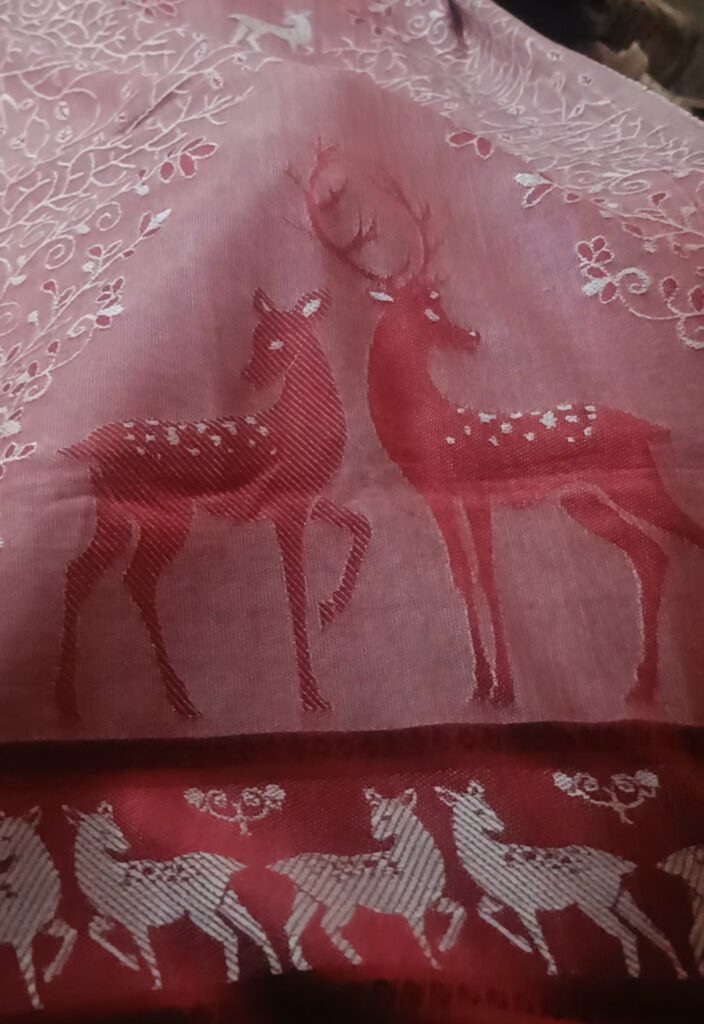
As employment rates decline, the average age of marriage in Kashmir has risen from the traditional 25-30 range to around 35. With basic needs becoming increasingly difficult to meet, the responsibility of supporting the family often falls on anyone over the age of 20. As a result, many young people in Kashmir are forced to leave their education behind to start working, and it’s common to see a 20-year-old with the maturity and burdens of a 30-year-old.
Despite Kashmir’s significant hydroelectric power generation, including the Baglihar project, electricity is not subsidized for locals. Even those living in villages pay a fixed monthly amount of ₹1,050, while city dwellers pay ₹1,550. This situation seems unjust, especially considering that the region generates its own electricity, yet people are burdened with high bills.
While people in Ladakh increasingly migrate to the plains during the harsh winter months, Kashmiris often can’t afford to do the same. They are forced to rely on the limited income from Pashmina production to get by during winter. Meanwhile, in Jammu, the situation appears different. People are relatively better off, and the ads I saw on the streets, featuring luxury jewelry—similar to what you’d find in the southern states—suggest a higher level of affluence compared to other parts of the region.
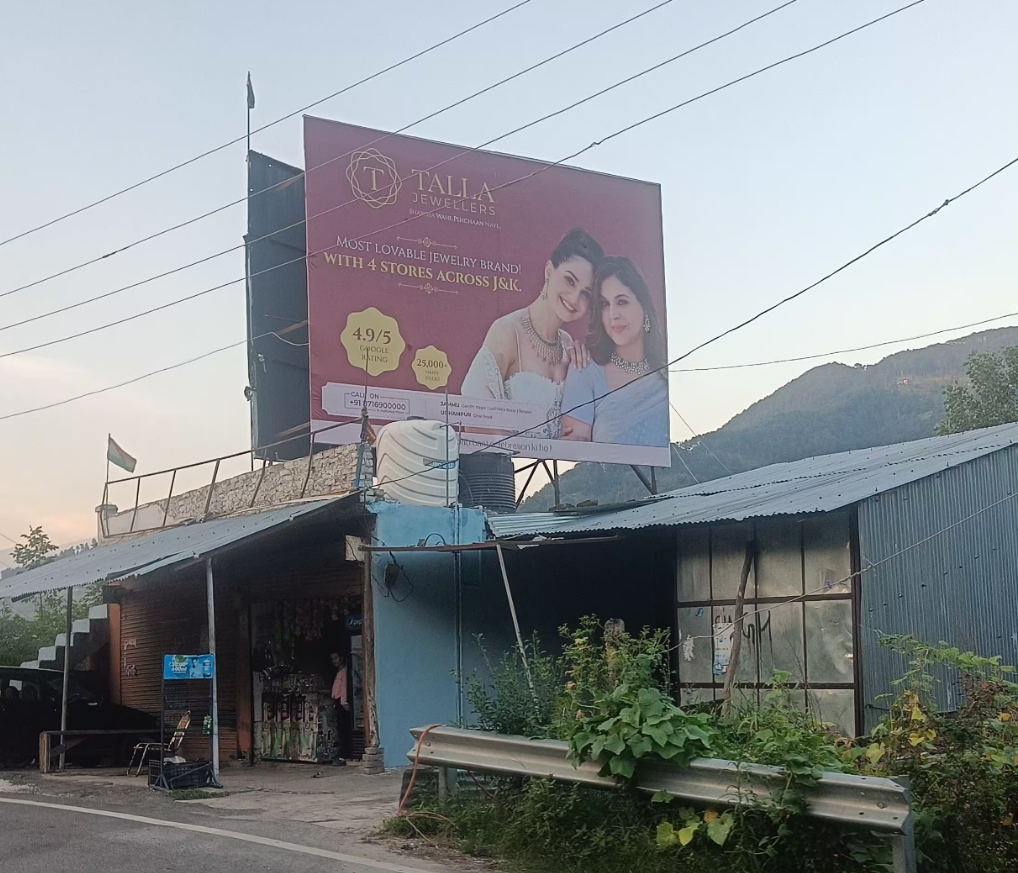
Crops and food
Kashmir is known for its paddy fields, apple orchards, walnuts, apricots, saffron, and corn. The diet of Kashmiris is heavily centered around rice, which they typically consume twice a day. Their meals are predominantly non-vegetarian, with most people eating meat daily if they can afford it. The limited vegetarian dishes I observed mainly included dal, lettuce, and tomatoes. A unique aspect of Kashmiri cuisine is their butter tea, which is enjoyed both in the morning after regular tea and in the afternoon after lunch. This tea is often accompanied by various bread snacks, all made from maida (refined flour).
In contrast, Jammu’s cuisine is primarily vegetarian, with the locals taking pride in their Rajma Chawal (kidney beans with rice). The beans grown in this region are among the finest in the country. Jowar (sorghum) roti is also a staple, much like in Maharashtra. The primary crops in Jammu include corn, millet, pulses, wheat, barley, rice, and tobacco.
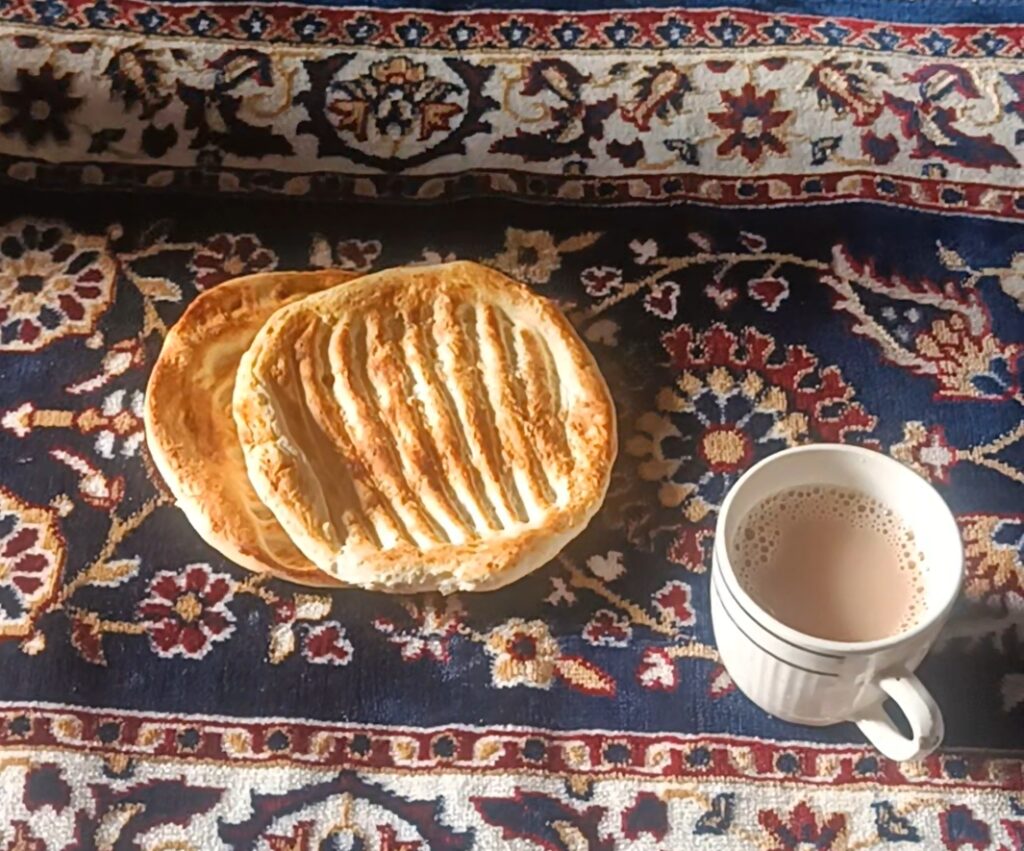
Nature’s gift in man’s hands
Nature has blessed Kashmir with an abundance of trees that truly make it a paradise on Earth. The landscape is dotted with Deodar, pine, juniper, cypress, and the iconic Chinar trees, creating a scene of unparalleled beauty. Every view in Kashmir feels like a picturesque postcard. Acres of apricot trees stretch across the land, resembling vast forests. The region is also known for producing some of the finest furniture, including the famous willow cricket bats. However, this natural beauty is increasingly threatened by human neglect. Unlike Ladakh, where tourism and vehicle movement contribute to the melting glaciers, Kashmir faces environmental challenges primarily from within its own community.
Kashmir, a densely populated Muslim-majority region, struggles with issues of education and environmental awareness. Combined with governmental apathy, this has led to significant garbage accumulation. Some areas I visited were shockingly unclean, with water bodies filled with trash as people routinely discard waste wherever they please, except within their homes. While immediate surroundings are often kept tidy, the broader environment suffers. Kashmir lacks a proper waste disposal system; outside of larger cities like Srinagar, most people are unaware of where their waste ends up. Dump yards are scarce, and waste is frequently discarded in open areas. Shops rarely have dustbins, and the casual disposal of plastics in the open is common, a problem that extends into the Jammu districts as well.
The consequences of this neglect are becoming increasingly apparent. This year, the average temperature in Kashmir soared to nearly 35°C, up from the previous year’s average of 28°C. Every person I spoke to lamented the rise in temperature and the lack of rainfall, which has severely affected crops. In Chandigam village, located in Lolab Valley, I witnessed a lake that had never dried up in ages reduced to a barren stretch of land. It’s clear that Kashmir urgently needs attention and intervention to prevent irreversible damage to its environment in the near future.
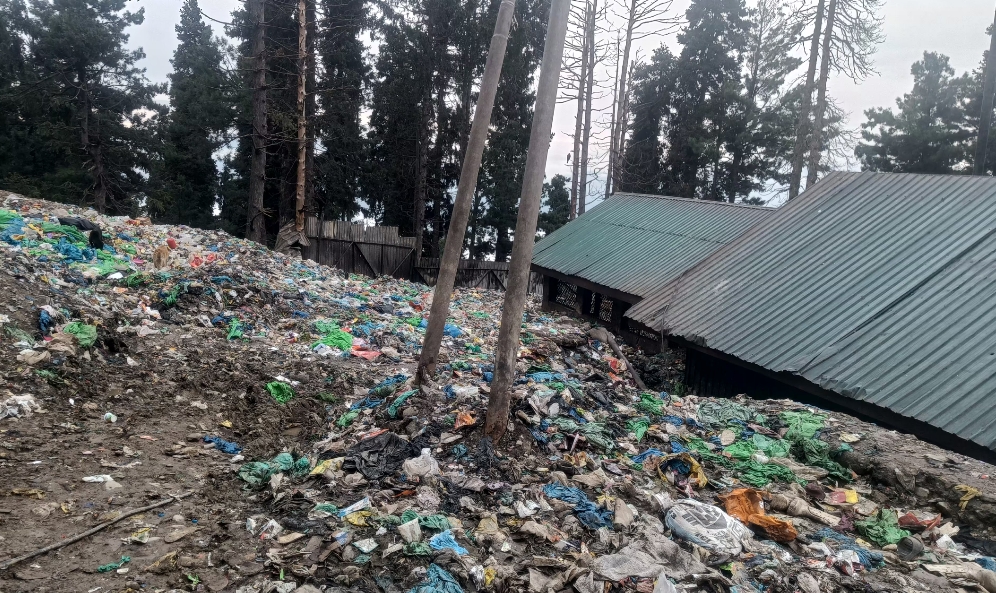
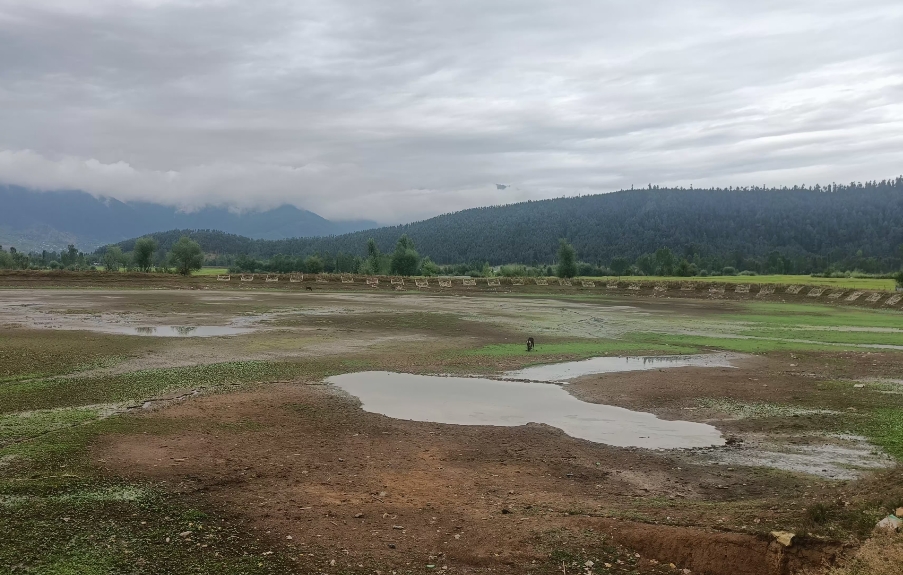
Hold on separation
As mentioned earlier, Jammu and Kashmir, despite being vastly different in almost every aspect, are united solely by the historical rule of a common king who governed both regions as one kingdom. The Pir Panjal range, which separates these areas, once had no connecting roads, effectively isolating Kashmiris and Dogras from each other. This lack of interaction led to almost no cultural exchange between the two communities. A pertinent question arises: why have these two distinct regions been merged into a single Union Territory (UT) in the modern day, while Ladakh has been granted separation from J&K?
In my conversations with locals, one explanation stood out, offered by an army man. He suggested that the government’s decision to keep Jammu and Kashmir as a single entity was to avoid making Kashmir a Muslim-majority region. A Muslim-dominant region might lead to increased demands for autonomy and reservations, potentially shifting the balance of power entirely towards the Muslim community. Keeping the regions together might be seen as a strategy to maintain control and prevent any one group from becoming too self-sufficient.
However, this forced union has created significant challenges, as the regions are vastly different in their needs and priorities. Jammu residents often express frustration over the larger allocation of the budget to Kashmir, arguing that they too require substantial resources to improve their quality of life. Corruption is one of the few issues that both regions share in common. Some locals believe that the revocation of Article 370, which granted special status to J&K, was intended to bring the region under central control, partly to combat this pervasive corruption.
There are also claims that past governments have manipulated the demographics for political gain. Some locals allege that large numbers of Bangladeshis and Rohingya were settled in Jammu to secure votes, while the current administration is accused of bringing in pro-right-wing settlers from Rajasthan and Gujarat. This, they believe, has altered the demographic landscape of the region. During my travels, I did indeed notice a significant presence of people from Rajasthan and Gujarat in Jammu, fueling these suspicions.
Despite my extensive journey through J&K, the complexities of the region remain elusive, and I left with more questions than answers. The reality of Jammu and Kashmir is difficult to fully grasp, and it’s clear that trusting any one narrative—especially that of the government—can be risky. However, one truth that stood out is the genuine warmth and kindness of the villagers and those working in the fields, qualities that seem unaffected by the turmoil around them. Yet, it’s equally apparent that power can change people, even those who were once oppressed.
In conclusion, any region embroiled in conflict is likely a reflection of the struggles between its people and those in power. The higher authorities often hold the key to these issues. If your opinions differ from mine, I welcome you to comment below with your reasoning. I’m eager to learn and broaden my understanding. To read more of my articles, head to this page.
I am a 31 year young PhD graduate who has decided to travel the length and breadth of India on my cycle, to document the journey of meeting a vast array of people. In my journey, I intend to understand the characteristic features of the people of this nation and categorize them based on their demographics, age, profession, gender, traditions, and cultural differences.